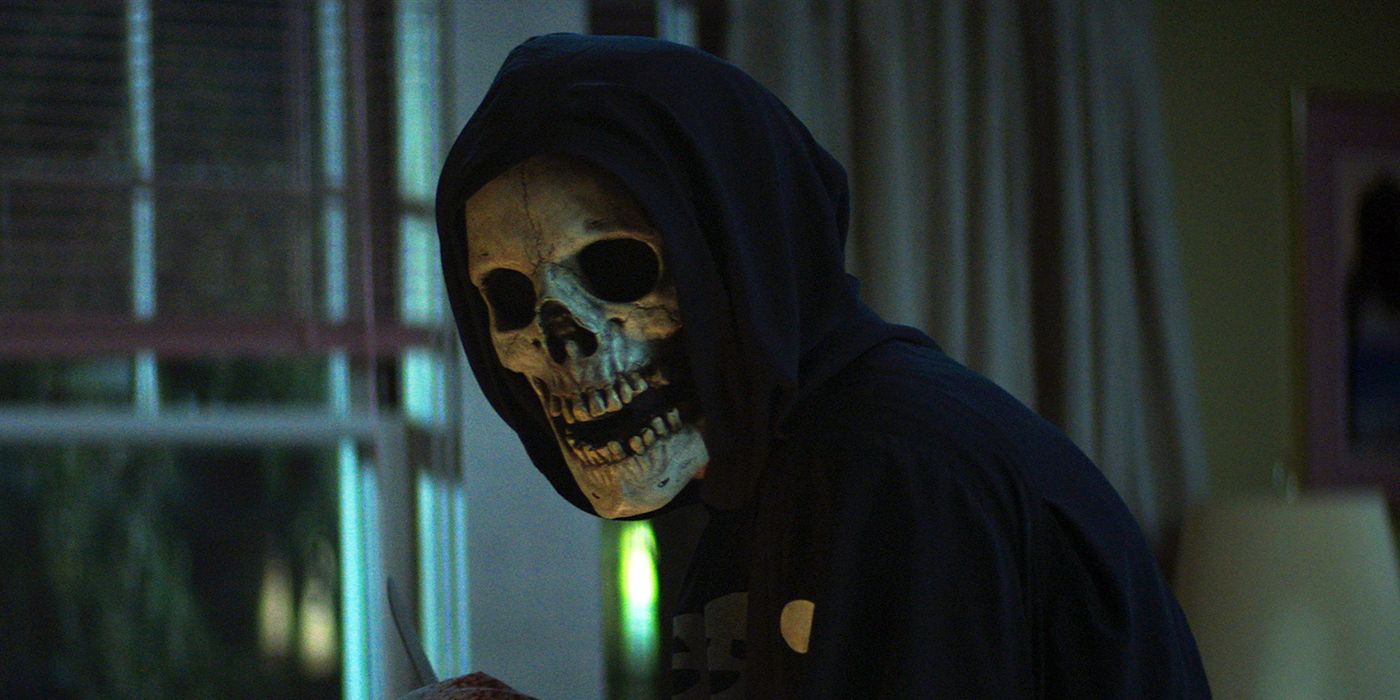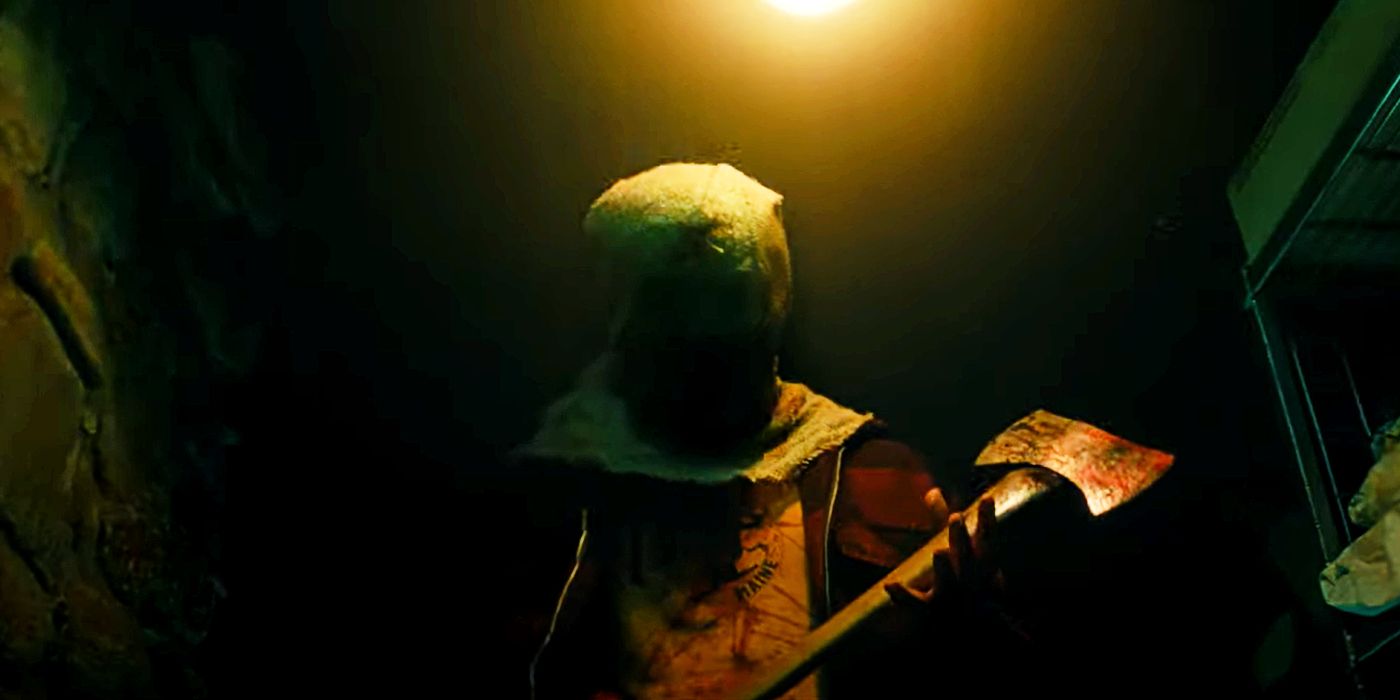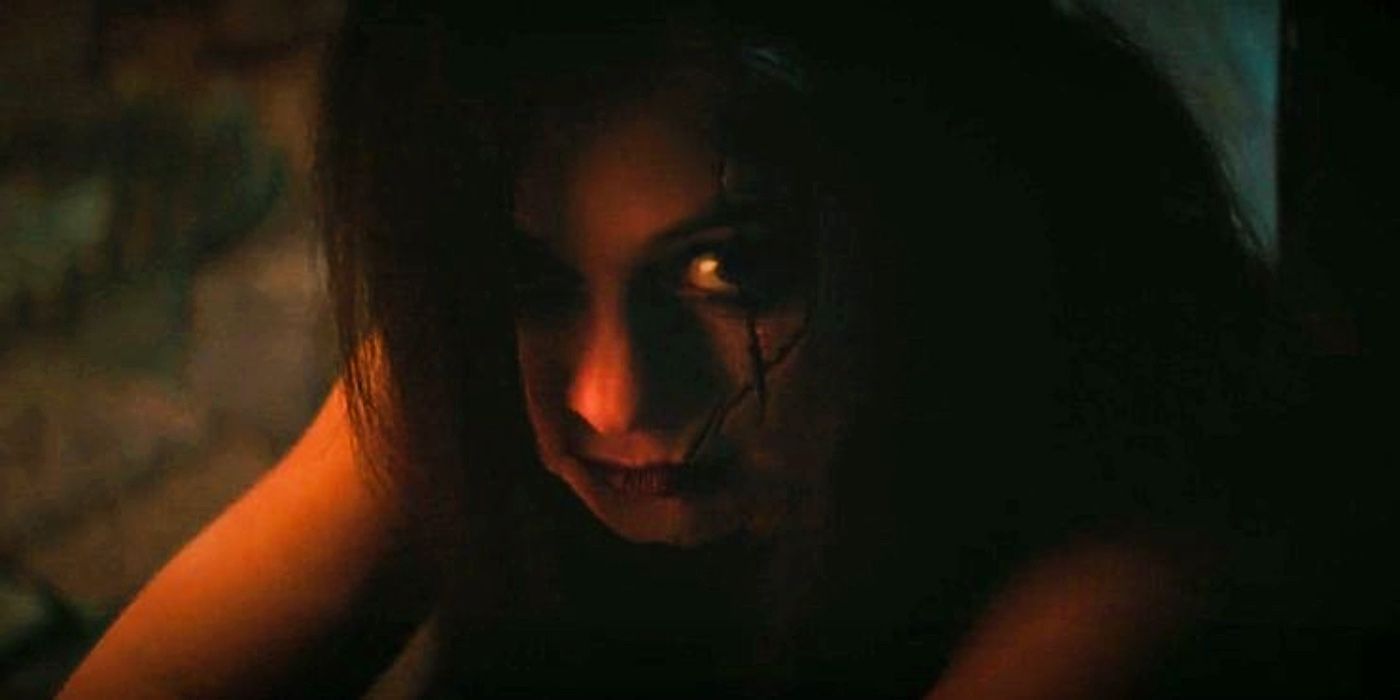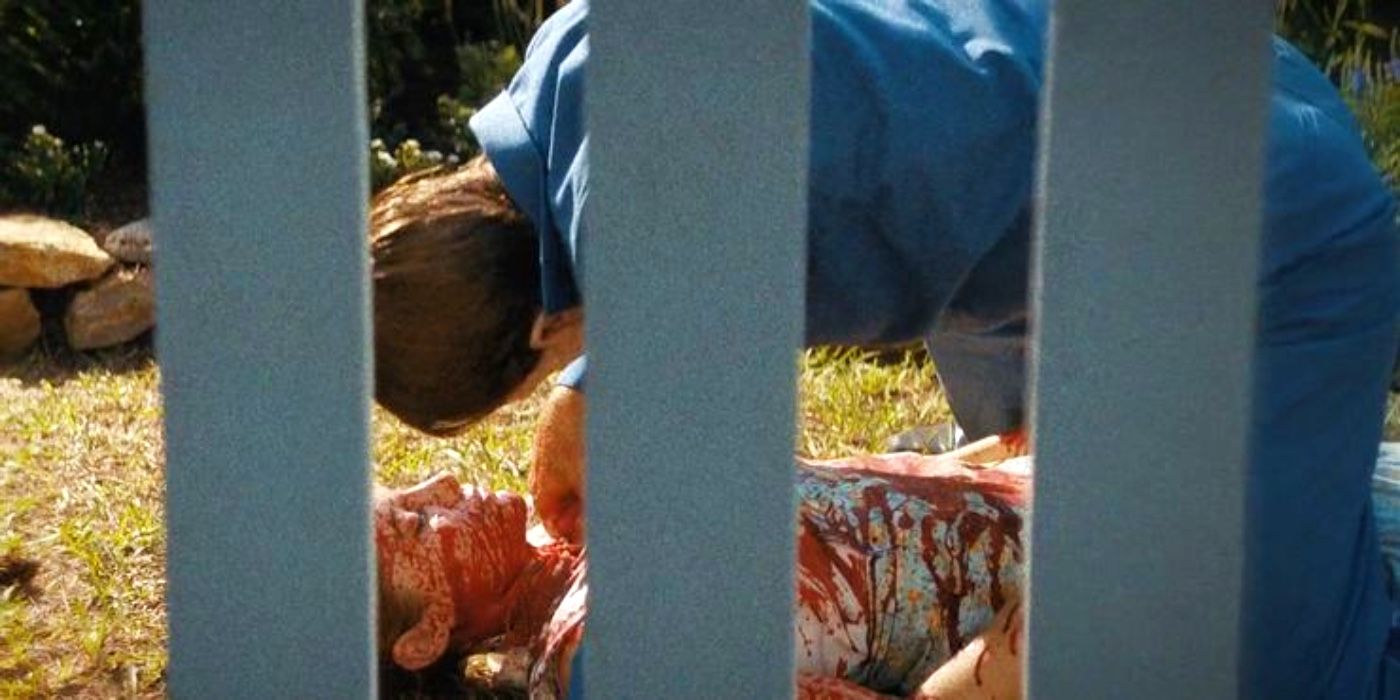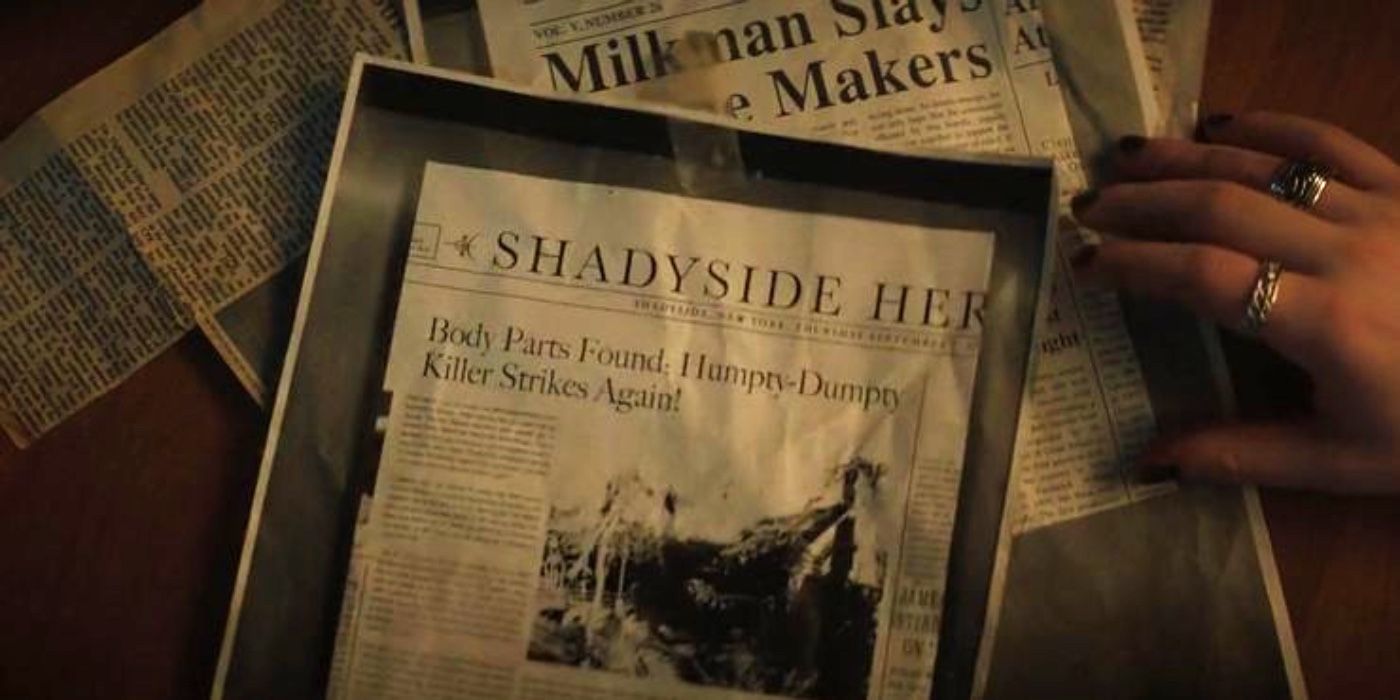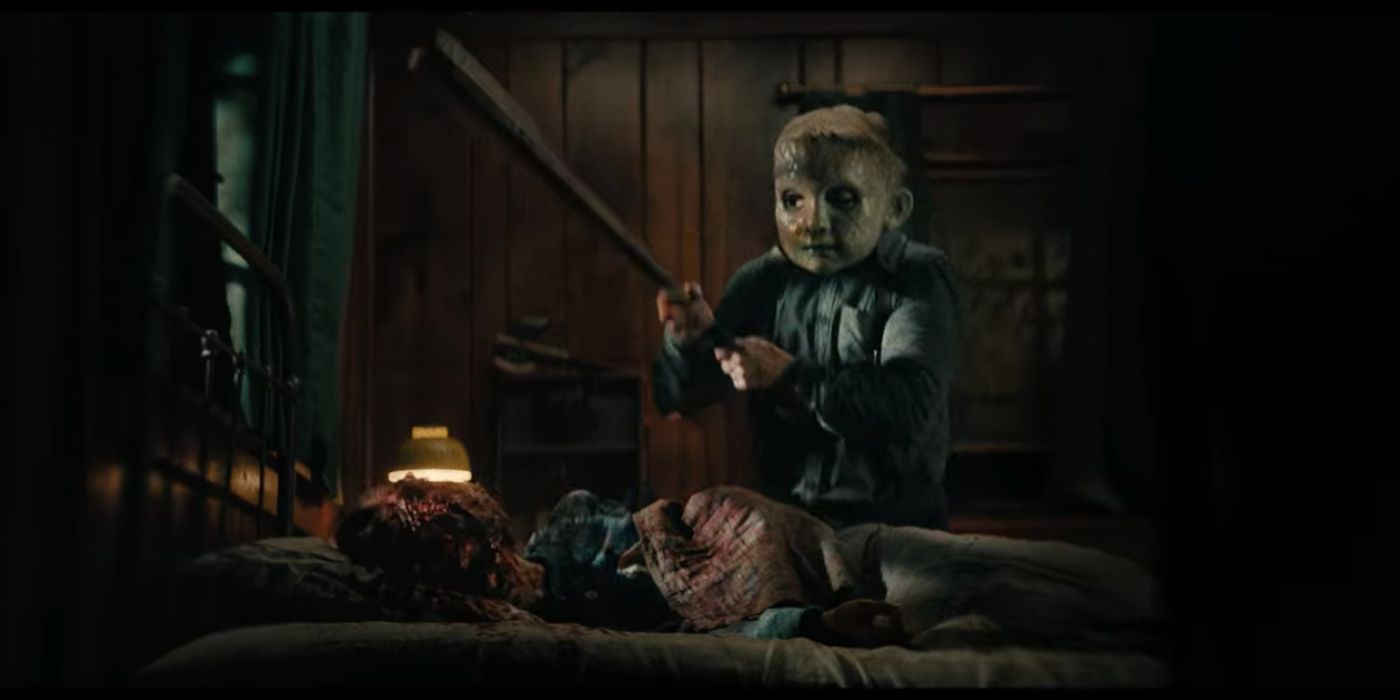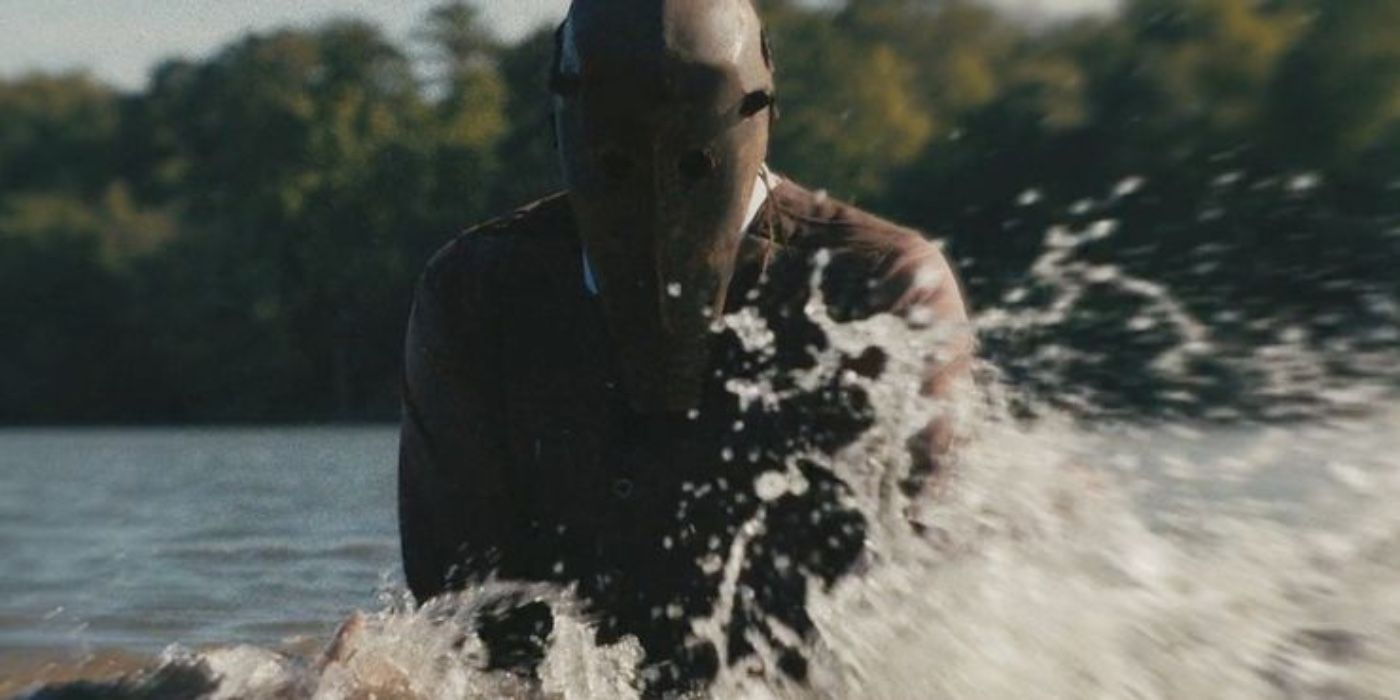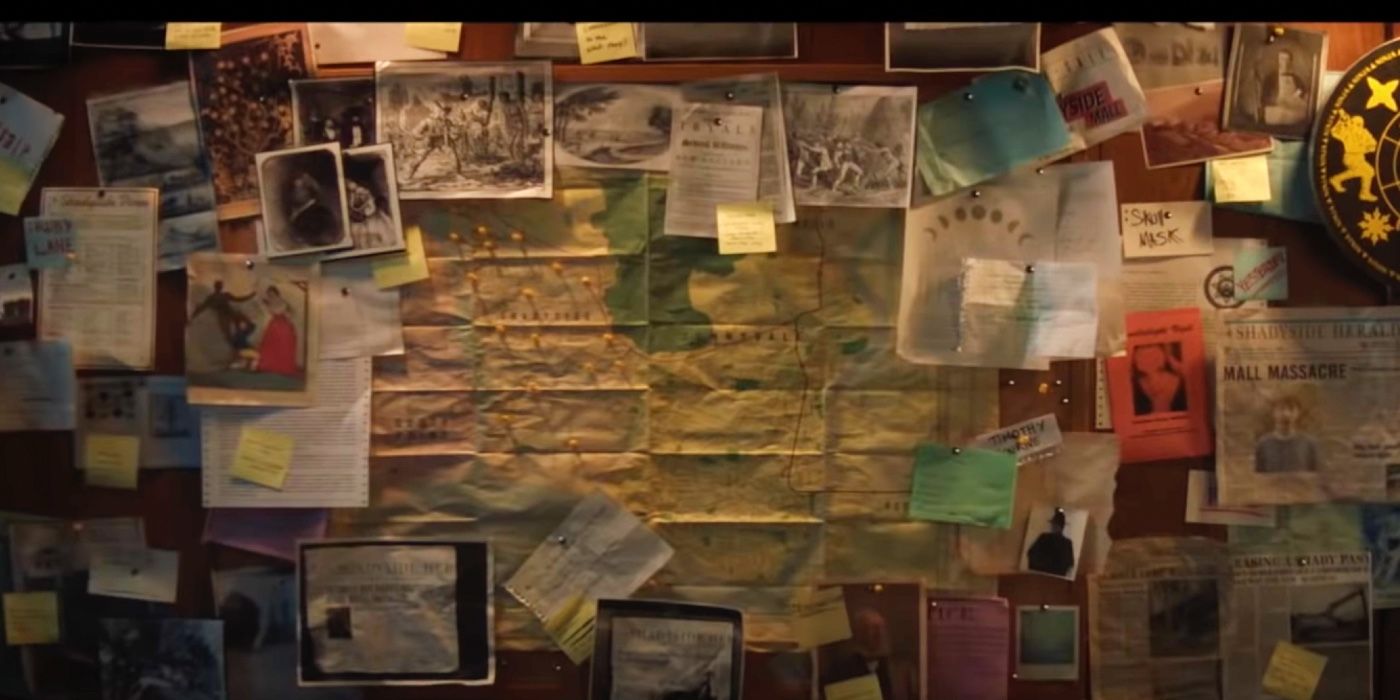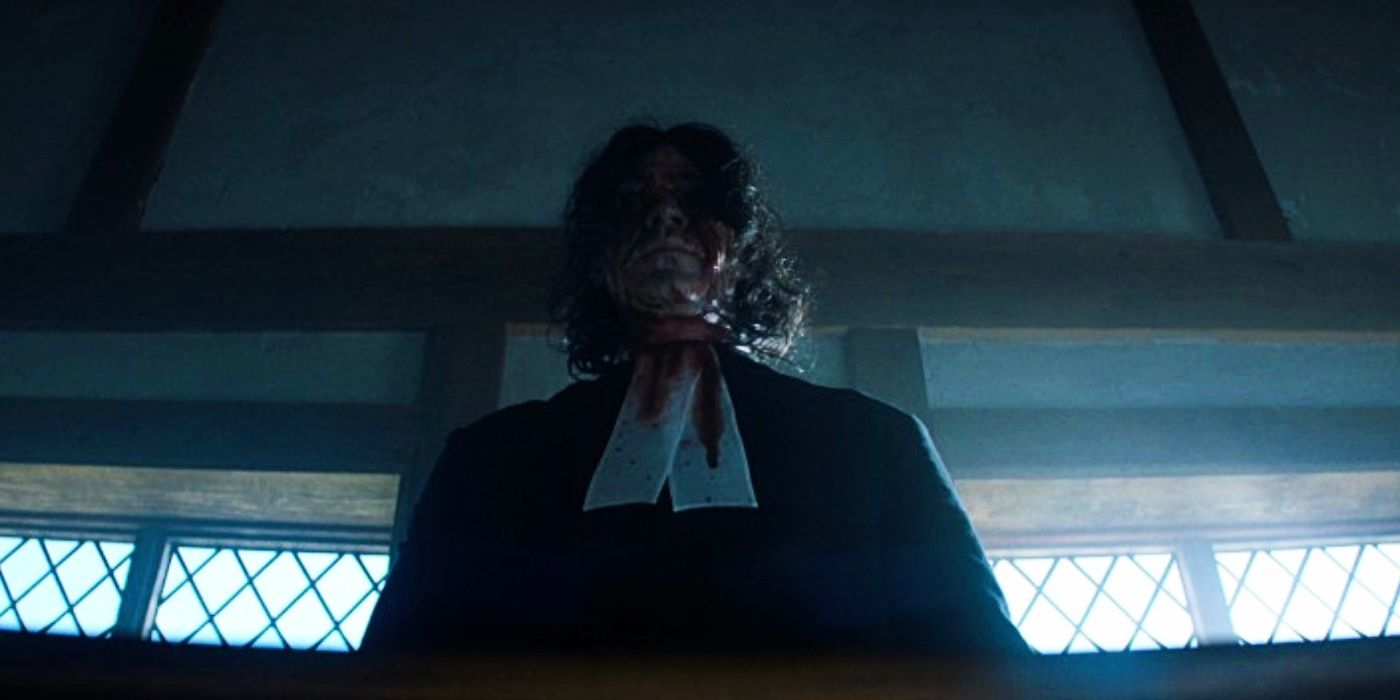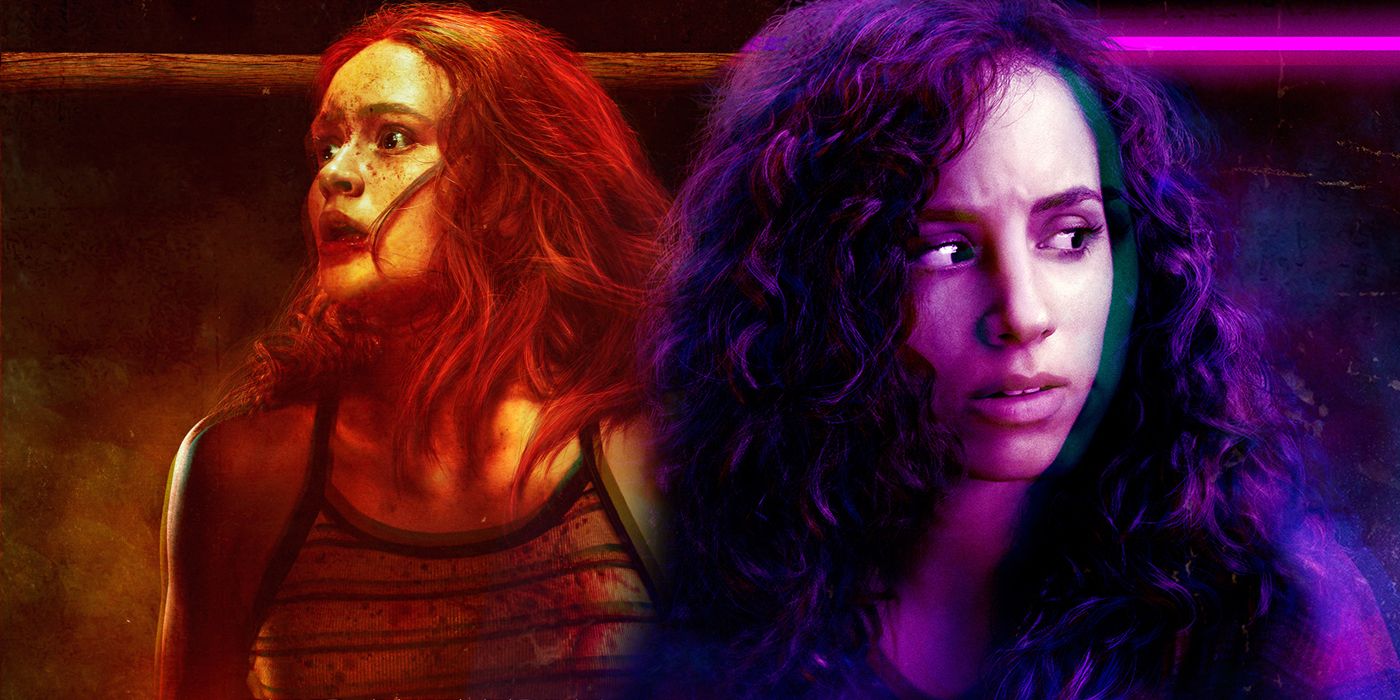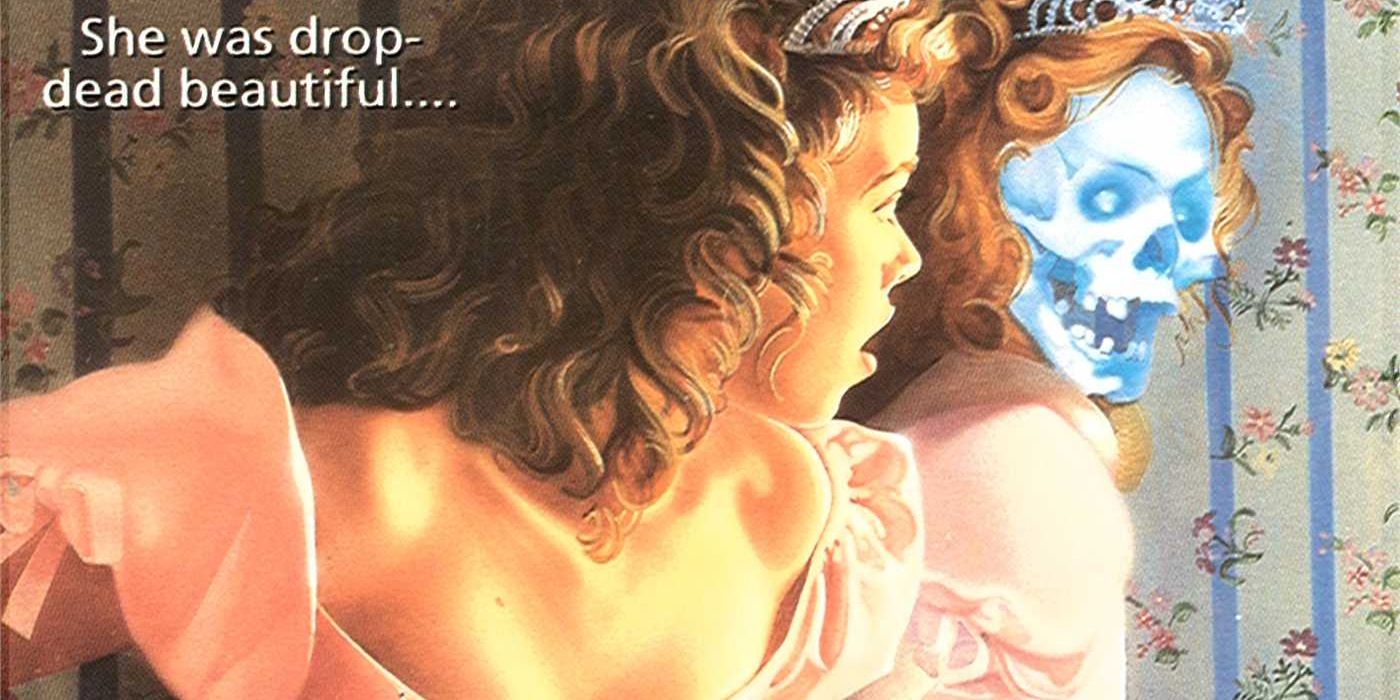Summary
- Fear Street trilogy spans centuries with a diverse roster of killers inspired by horror classics like Jason Voorhees and Michael Myers.
- Skull Mask, Camp Nightwing Killer, Ruby Lane, The Milkman, and more haunt Shadyside, each with a unique backstory and terrifying presence.
- Fear Street’s unique timeline allows for a blend of familiar horror tropes and refreshing twists, setting the stage for potential spin-offs.
The Netflix Fear Street trilogy takes place in three different periods, with the Fear Street killers tormenting the town of Shadyside over several centuries. Fear Street is inspired by a book series by author R.L. Stine. The first movie, Fear Street: 1994, introduced viewers to Shadyside, Ohio, and its sinister, serial killer-ridden history. Fear Street 1-3 follow Shadyside teens Deena, Sam, Josh, Simon, and Kate, as they come face-to-face with the town’s most notorious killers from history. Through Josh, who researches past massacres, details of the Fear Street killers are revealed.
The Fear Street timeline runs from 1666 to 1994, but the movies weren’t released in chronological order, so the audience learns the details in a different order than when they actually occured. The hit trilogy is a celebration of the horror genre, featuring an abundance of homages and Easter eggs to the biggest horror slasher films of the past fifty years. Being set in different decades/centuries gave Fear Street the opportunity to cover a range of horror tropes across the three movies, and one way it takes advantage of this is by featuring a wide roster of villains.
Related
Why Fear Street Made A Friday the 13th Remake Harder
The success of Netflix’s Fear Street trilogy makes a potential Friday the 13th reboot somewhat lacking compared to Fear Street: 1978’s fresher story.
Ryan Torres (Skull Mask) – 1994
“Skull Mask” is the first of the Fear Street killers introduced, and he’s certainly one of the most memorable. The opening scene of Fear Street: 1994 shows the Shadyside Mall Massacre enacted by high school graduate and mall employee Ryan Torres. He murders bookstore employee and friend Heather Watkins, who is killed in Drew Barrymore Scream fashion considering Maya Hawke was used to promote the film. When Ryan chases Heather around the mall in a skull mask, she looks around to see several other victims. After Torres’ murders make headlines, the media dubs Shadyside as the murder capital of America.
Ryan is the most recent Shadyside resident possessed by the spirit of Sarah Fier. Like many others before him, Skull Mask is used as a puppet by her to enact revenge on the town for executing her as a witch in 1666. Deena reads a police report that reveals Ryan killed at least nine people in the mall until a responding police officer fatally shot him.
Following Ryan’s death, Sarah Fier moved on to her next victim: Sam Fraser. In the ensuing attack on Sam and her friends, Ryan/Skull Mask is one of the minions raised from the dead to pursue them. Skull Mask then appears again in Fear Street 1666 alongside several others, as he’s one of the Fear Street killers summoned to the mall to kill Nick Goode
In terms of inspiration, Skull Mask draws heavily from masked slasher villains like Halloween’s Michael Myers and Friday the 13th’s Jason Voorhees.
Tommy Slater (Camp Nightwing Killer) – 1978
The axe-wielding Camp Nightwing Killer is the second most recent Fear Street killer who has the most connections to the 1994 characters. The killer appears in Fear Street: 1994 as one of the minions Sarah Fier resurrects to kill Sam and her friends. However, it’s Fear Street 1978 that truly delves into the Camp Nightwing Killer and his origin. The Camp Nightwing Killer was once Tommy Slater.
Tommy was one of the Camp Nightwing counselors who, like Ryan Torres would in 1994, “snapped” and began engaging in wholesale slaughter. His transformation comes complete with flies that seem to be inexplicably drawn to him, and unlike Skull Mask, his links to the supernatural are much more obvious. Interestingly, Tommy’s transformation starts when another character, Mary Lane, attacks him first because she knows he’ll be the next to fall to Sarah Fier’s possession.
During his rampage, Ziggy Berman (the C. Berman of Fear Street: 1994) catches a glimpse of Sarah Fier, confirming to her that Tommy is far from a “regular” spree killer and that something supernatural is happening. So brutal was the Camp Nightwing Killer’s massacre that, after the events of 1978, Sunnyvale’s mayor demolished the camp. The mall that was built where it used to stand would later host the 1994 murders.
The Camp Nightwing Killer’s look features a sack on his head, reminiscent of one of the trio in The Strangers. It also goes without saying that the Camp Crystal Lake parallels with Friday the 13th are present in abundance.
Ruby Lane – 1965
One of the more mysterious killers, Ruby Lane was a 16-year-old Shadyside high schooler who, possessed, murdered her boyfriend and six others with a razor in 1965. Ruby sings “You Always Hurt The One You Love” while going on her killing rampages.
The Fear Street: 1994 crew first encounters her when Simon, walking on the main street, sees her sitting on the sidewalk singing the song. He confronts her, then she uses her razor to slash his leg. She has a zombie-like appearance that makes Simon think they’re in an updated version of Night of the Living Dead. Josh then explains that Ruby slashed her own wrists with the shaving razor after killing her boyfriend and friends, hoping (unsuccessfully) to bring the witch’s influence to an end. Ruby stalks the teens in 1994 as the undead killers hunt for Sam.
Fear Street 1978 built a little on Ruby Lane’s story, though she wasn’t the main antagonist. Her mother, Nurse Mary Lane (Jordana Spiro), is the one who attacks Tommy Slater and kickstarts his transformation into the Camp Nightwing Killer. Mary is aware of the curse to a degree and knows Tommy will suffer the same fate as her daughter Ruby. Ruby returns in Fear Street: 1666 alongside other former killers.
As far as influences go, Ruby isn’t as on the nose as Skull Mask and the Camp Nightwing Killer. Carrie is a clear influence in the sense that she’s a previously innocent girl corrupted by dark forces. The razor element and her look also harken back to The Angry Princess, one of the spirits in Thirteen Ghosts.
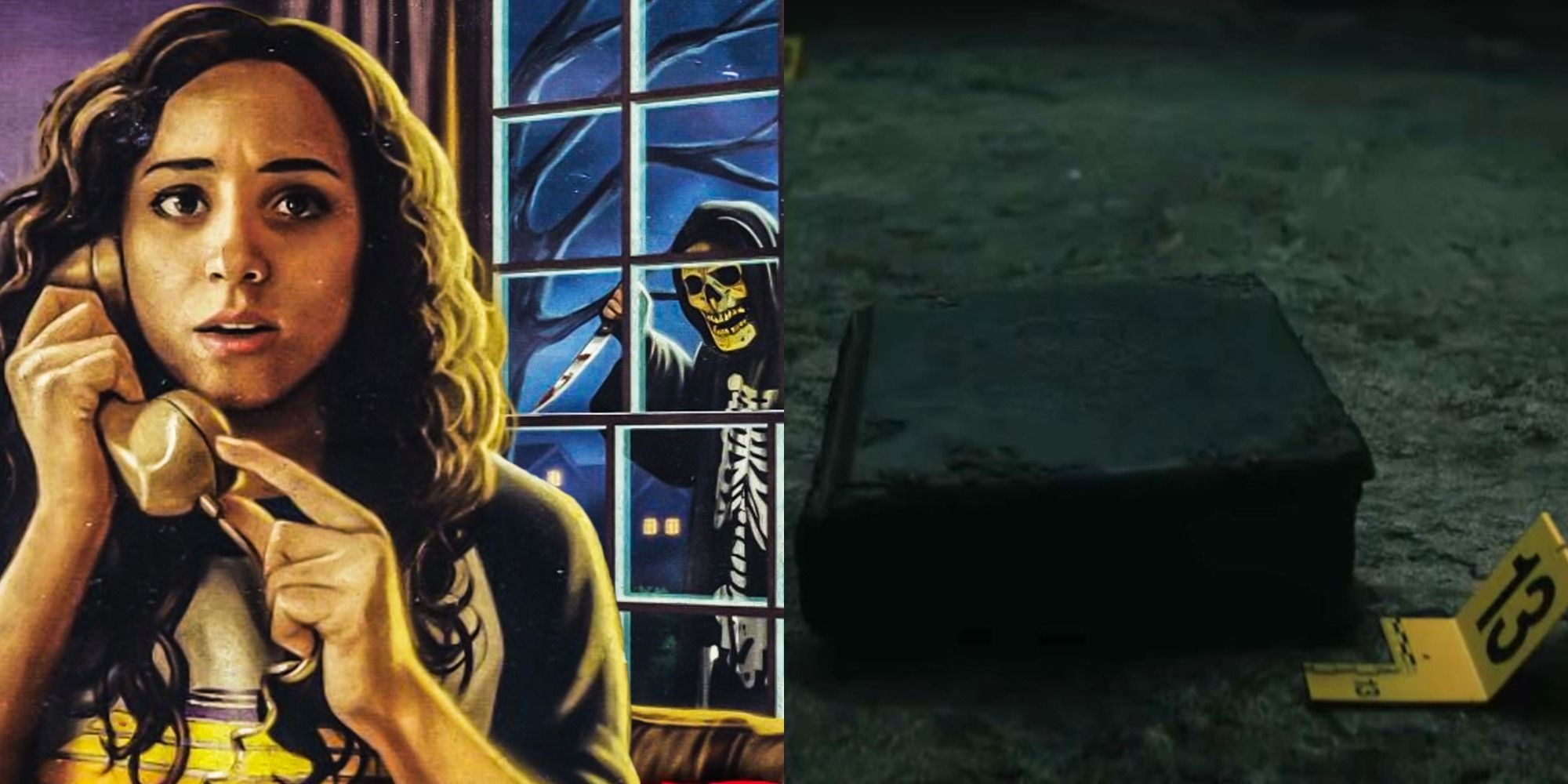
Related
Fear Street: 10 Questions We Still Have After The Trilogy
Netflix’s Fear Street trilogy might have ended, but fans still have questions about what’s next for the characters and the popular franchise.
Harry Rooker (The Milkman Killer) – 1950-53
Not much has been revealed about Harry Rooker, who was a Shadyside milkman-turned-killer in the early 1950s. Known (fittingly) as The Milkman Killer, Rooker murdered some of his customers – who were all housewives – with a switchblade. Josh tells Deena and the Fear Street: 1994 gang that Rooker killed his victims in 1950, though when chatting on AOL, his pen pal says the milkman went on his rampage in 1953. The Milkman Killer appeared once more in Fear Street: 1978, when he and the Camp Nightwing Killer tag-team Ziggy and her sister, Cindy.
Rooker, one of the scariest Fear Street killers, stabs Ziggy multiple times, giving audiences a chance to see just how brutal The Milkman Killer is first-hand. He also returns like the others at the climax of Fear Street: 1666. While having comparatively little screen time, The Milkman Killer is ranked by fans as one of the most terrifying in the trilogy. He’s used almost exclusively for jump scares, appearing out of nowhere like a murderous ninja. This makes him truly terrifying – before his victims even know what’s happening, they’ve already been stabbed repeatedly.
The Milkman Killer has a grotesquely burned face reminiscent of Freddy Krueger from Nightmare On Elm Street, made all the more horrifying by a childish, almost joyful glint in his one remaining eye.
Humpty Dumpty Killer (1935)
Unseen onscreen (although a firm favorite for theories about Fear Street 4), the information on the 1935 Humpty Dumpty Killer given by Josh and his newspaper clipping in Fear Street: Part 1 is limited. One of the newspaper headlines notifies the public about the Humpty Dumpty killer striking again, which is the only readable information. While explicit details of the murders are unknown, the Humpty Dumpty killer’s M.O. involved leaving dismembered body parts for the police to find (hence the name).
Director Leigh Janiak (via Collider) revealed that the Humpty Dumpty killer was originally intended to show up in Fear Street 1994, but was cut due to Janiak wanting to do the idea justice, “I had this really interesting backstory… about a guy that was killing people and taking their body parts and making new people out of them. Like sewing things together — of like Humpty Dumpty putting things back together again.” It’s possible a future Fear Street spin-off will show more of this incredibly brutal-sounding serial killer.
Billy Barker – 1922
Billy Barker is another utterly terrifying Fear Street killer and one that plays on the evil child horror trope. One of the most frightening snippets of the killings from Shadyside’s past shows a young boy, Billy Barker, murdering his sleeping brother in bed. Josh’s newspaper clipping gives more information about the murder, describing the event in broad terms as a deformed boy gruesomely bludgeoning his brothers to death with a baseball bat while they slept.
The newspaper also reveals that Billy died after the event, likely in a way where he tried to stop the witch’s influence like the other possessed victims. The fact that the spirit can have such young victims is unsettling in and of itself, but the murder scene in Fear Street is especially scary. Seeing a child carrying out acts of violence with a baseball bat would be bad enough, but the way Billy taps his bat on the floor as he calmly walks room to room bludgeoning his siblings is genuine nightmare fuel. The creepy Michael Myers-like mask doesn’t help.
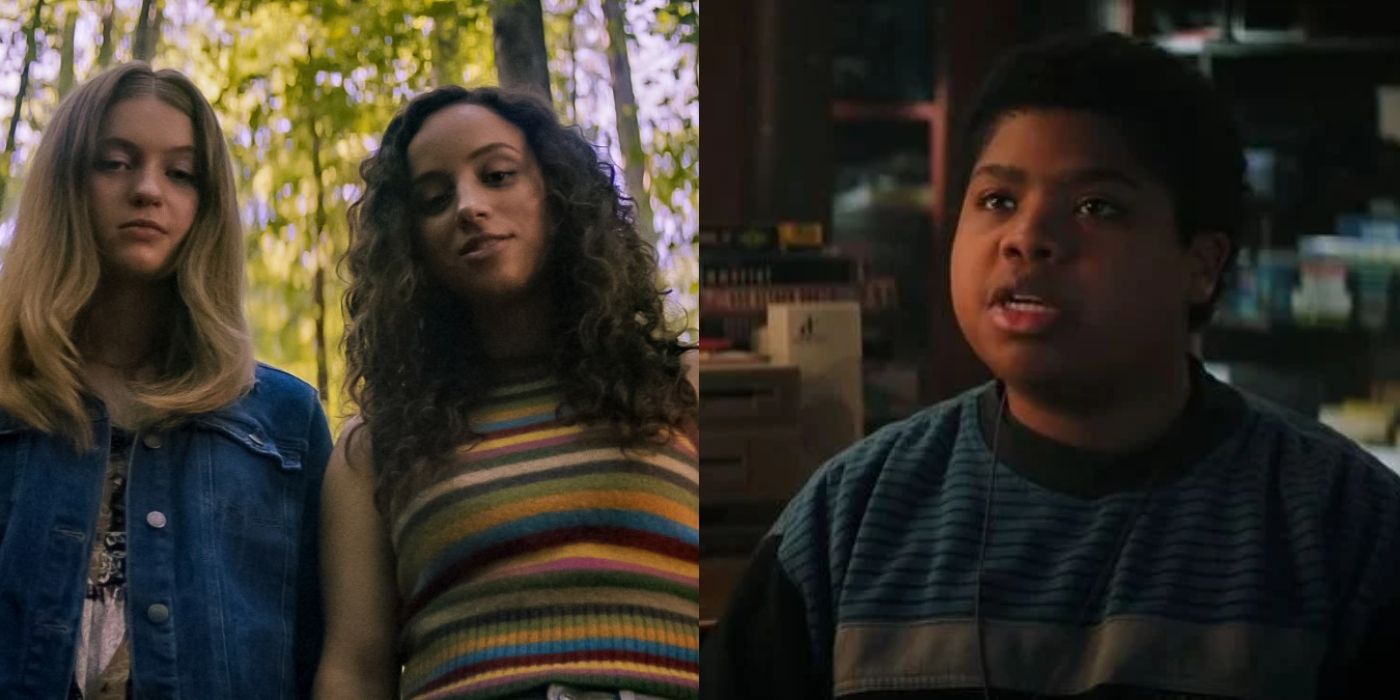
Related
Netflix’s Fear Street: Which Main Character Are You, Based On Your Zodiac?
Netflix’s Fear Street horror trilogy is a treat for horror fans. Each main character fits nicely into the zodiac, and audiences can relate to them.
The Grifter – 1904
90 years before Fear Street: Part 1, Shadyside was victim to a killer known as “The Grifter” in 1904. Details on The Grifter are almost as slim as the Humpty Dumpty Killer, with the newspaper clipping emphasizing the “Grifter Guts Girls.” The scene that displays The Grifter murdering his victims shows him wearing an odd mask while he drowns a girl in a lake, so the gutting part of his killings is unknown.
Like Billy Barker, The Grifter isn’t featured beyond the exposition in 1994 and finale in Fear Street: 1666. He’s another candidate for a spin-off, especially given the potential of his turn-of-the-century time setting and Jack-the-Ripper-esque M.O. His long leather mask is eerie even when just viewed as a photo, appearing like a combination of a Medieval plague doctor and Pyramid Head from the Silent Hill franchise.
Farmer of Death – 1890
With no details other than his nickname, 1890 brought with it a sinister farmer who killed some of Shadyside’s residents. Josh has a note that says “Farmer of Death – 1890” on his wall, though it doesn’t feature a corresponding newspaper clipping.
It appears that Shadyside’s Sarah Fier curse had gone dormant for several years before the farmer, with Josh’s notes including a paper that reads, “1775-1831?” This question mark indicates no known massacres occurred during this timeframe, though Josh has a note with an illegible killer’s name for 1832.
It could also be that no records survived or that Sarah Fier was much more successful in her first centuries. It would be remarkably easy for her to wipe out an entire village in the late 1700s without attracting attention – it wasn’t uncommon for the whole population of remote settlements to be lost to disease or a harsh winter. News didn’t travel fast back then, after all. Sarah’s 1755-1831 Fear Street killers could have carried out massacres undiscovered for days, or even weeks.
Pastor Cyrus Miller – 1666
Cyrus Miller, the pastor of Shadyside (or Union as it was known in 1666), is the first noted killer and victim of the witch’s influence. Josh informs his friends that Miller killed kids and cut out their eyes back in 1666. Miller was said to be Fier’s first victim, having been supposedly possessed by her the same year she was executed for witchcraft.
Since religious American townspeople were crucial in convicting and executing people of witchcraft in the 1600s, the idea was that Sarah likely possessed Miller as revenge on those who metaphorically signed her death warrant. The newspaper clipping about his murders informs the audience that “Pastor Miller Snaps,” the same phrasing used to describe Shadyside’s killers for the next 300 years.
As expected, the third Fear Street movie, 1666, showed Cyrus’s crimes in full. The townsfolk find he has murdered a dozen children and has their bodies in the chapel. His actions and death lead the town to suspect witchcraft, and the rest of the Fear Street legend starts taking shape from there. Hannah, Sarah’s love interest, is blamed due to a villager spying on the two while they share an intimate moment.
It turns out, however, that Sarah Fier wasn’t responsible for Cyrus’ possession. It was Solomon Goode, ancestor of Sheriff Nick Goode, who made a pact with the Devil and offered up the use of Cyrus’s body as a bargaining chip. Sarah, unable to expose Solomon, instead tells the townspeople that she is the witch so that they won’t hang Hannah. Sarah is killed, but the legend persists that Shadyside is cursed by Sarah Fier (when actually the birth of the eldest child in each generation of the Goode family is the real catalyst for the Fear Street killers).
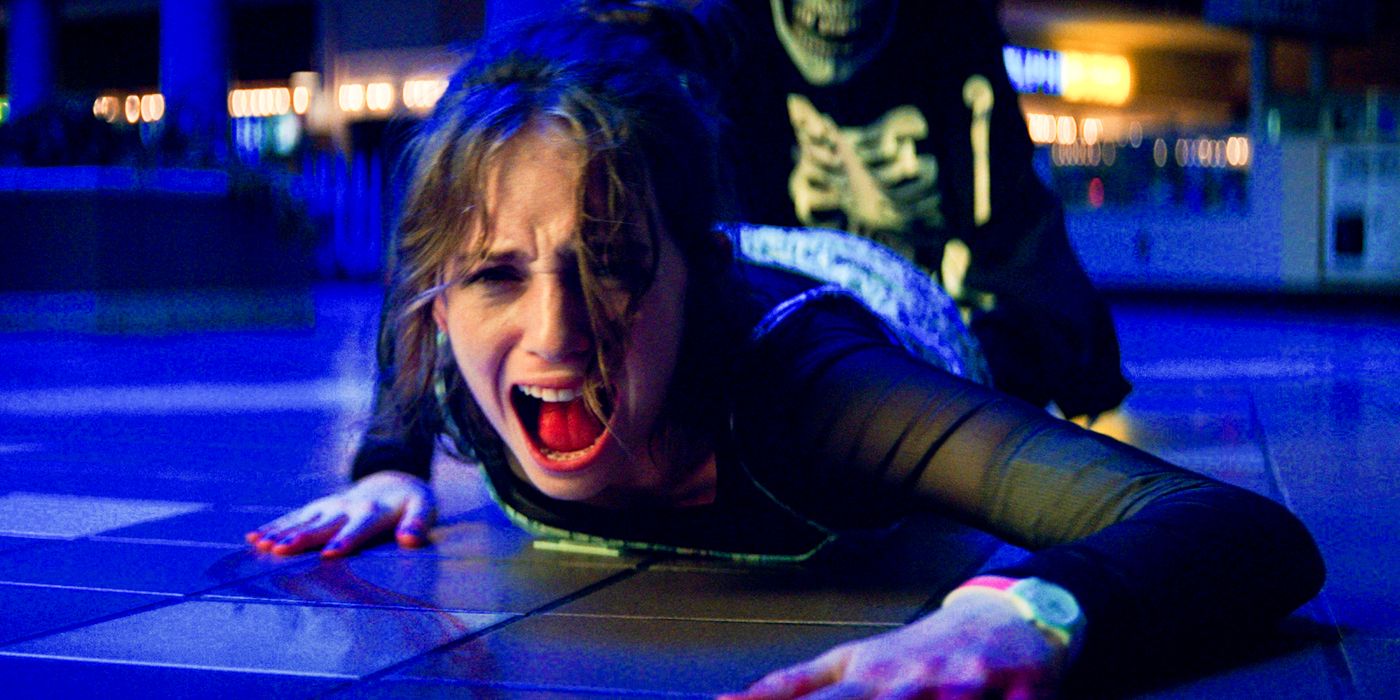
Related
Netflix Reveals 30 Fear Street Trilogy Horror Movie Easter Eggs
Netflix explores all of the various horror movie references that can be found throughout the Fear Street trilogy, based on R.L. Stine’s series.
How Fear Street’s Timeline Makes It Unique
The roster of Fear Street killers is wide and draws from dozens of horror inspirations. Some are straight-up slasher movie antagonists, while others are semi-demonic. The fact they’re all possessed adds a supernatural element too, which is brought to a satisfying head by the conclusion of Fear Street: 1666.
The Fear Street timeline may be a little difficult to follow for some, but it’s truly the trilogy’s greatest strength. It allowed for more flexibility in a single horror trilogy than has ever been seen before. By switching between so many horror subgenres and spanning so many centuries, as well as the throwback feel of the first movie, Fear Street found the snug midpoint between something comfortably familiar and deeply refreshing.
Audiences have seen spree killers like Skull Face and The Milkman Killer before, just as they’ve seen “evil witches” like Sarah Fier. But they’ve never been shown through the lens of an undead serial killer army that systematically rampages through a town due to an ancient curse rooted in homophobia. The series will no doubt spawn many more spin-offs based on the wildly varied Fear Street killers, and it’s the property’s unique timeline that makes this possible.
Will The New Fear Street Be Part Of The Timeline?
Though Fear Street was originally developed as a trilogy of movies inspired by Stine’s Fear Street series of novels, there will be more movies beyond that initial trilogy. While more are in development, Fear Street: Prom Night was filmed in early 2024. The latest chapter of Fear Street is set in 1988, centering on the competition to become Prom Queen at Shadyside High School. As someone who isn’t a member of the popular crowd is nominated, people start disappearing.
Though it sounds like the movie is set in the same town as the trilogy, Netflix has also termed it a “standalone” movie, and it is based on Stine’s Prom Night book in the original Fear Street novels. It’s unclear if there will be an attempt to link it to the other movies at all, though even if it stands alone, there could easily be Easter eggs for fans to make it clear they do exist in the same timeline.
With the movie set in 1988, that puts it right in the middle of the events of the first two chapters of the Fear Street trilogy. That means there could be locations or characters involved that the audience has already seen without contradicting the events of the other movies, even if Sarah Fier or the Goode family are not involved.
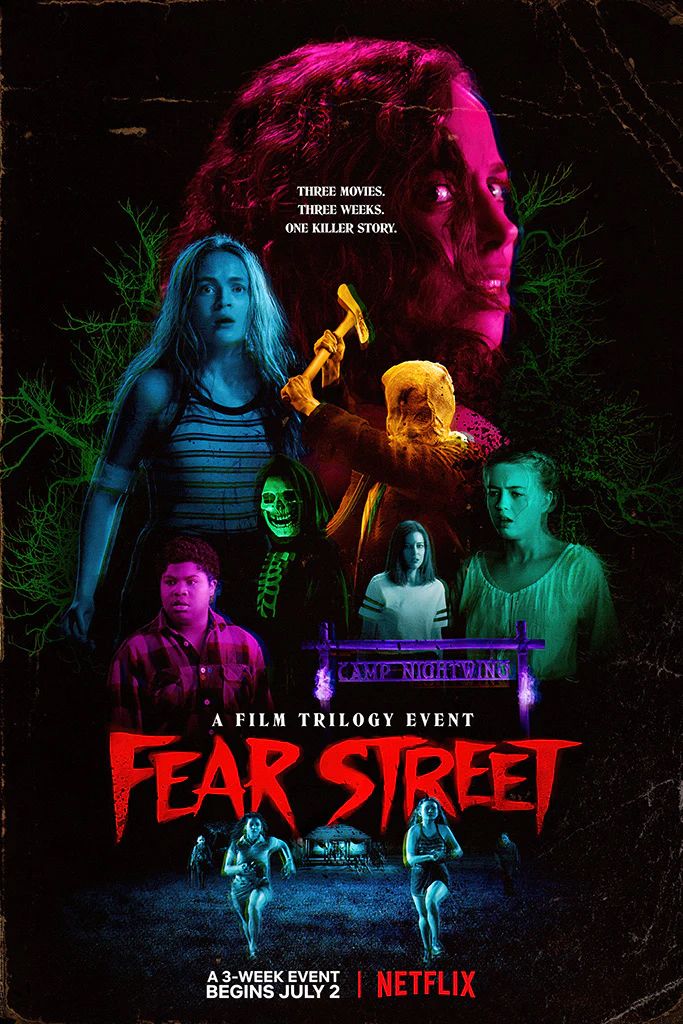
Fear Street
Fear Street is a multimedia franchise created by R. L. Stine that began as a book series in the 1990s. The story centers on the town of Shadyside, a place cursed for centuries until a group of teenagers are forced to find a way to break it. Otherwise, they’ll fall victim to deathless serial killers who continue to return until they kill their target. The series was brought back as a three-film event on Netflix in 2021 and gained widespread popularity.
- Created by
- R. L. Stine
- Cast
- Kiana Madeira , Olivia Scott Welch , Benjamin Flores Jr. , Ashley Zukerman , Ted Sutherland , Gillian Jacobs , Sadie Sink , Jordana Spiro , David W. Thompson , McCabe Slye
